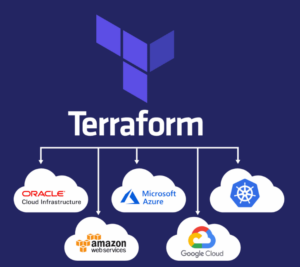
Terraform is an open-source infrastructure as code (IaC) tool developed by HashiCorp. It is designed to help users define and provision infrastructure in a declarative and version-controlled manner.
Infrastructure as Code (IaC):
Terraform allows you to define your infrastructure in code, which means you can version-control your infrastructure configurations. This helps in tracking changes, collaborating with team members, and rolling back to previous configurations if needed. It brings the principles of software development, such as versioning and collaboration, to infrastructure management.
Multi-Cloud Support:
Terraform supports multiple cloud providers, including AWS, Azure, Google Cloud Platform, and others. This multi-cloud support enables organizations to adopt a multi-cloud strategy or migrate between cloud providers with relative ease. It provides a consistent workflow, making it easier to manage infrastructure across different cloud environments.
Declarative Syntax:
Terraform uses a declarative syntax, allowing you to describe the desired state of your infrastructure without specifying the step-by-step procedures for achieving that state. This makes it easier to understand and manage configurations, as well as reduces the risk of configuration drift.
Resource Graph:
Terraform builds a dependency graph of resources based on your configuration. This allows it to determine the order in which resources should be provisioned or updated, ensuring that dependencies are satisfied and changes are applied in a logical sequence.
Change Automation:
Terraform can calculate and plan the necessary changes to move from the current state of the infrastructure to the desired state. This planning phase helps you understand the impact of changes before applying them, reducing the risk of unintended consequences.
Modularity and Reusability:
Terraform configurations can be modularized, allowing you to create reusable modules for different components of your infrastructure. This promotes consistency across projects and makes it easier to scale and maintain infrastructure configurations.
In summary, Terraform is important because it provides a powerful and flexible solution for managing infrastructure in a scalable, efficient, and collaborative manner. It aligns with modern DevOps practices, enhances infrastructure reliability, and facilitates the adoption of cloud technologies.

